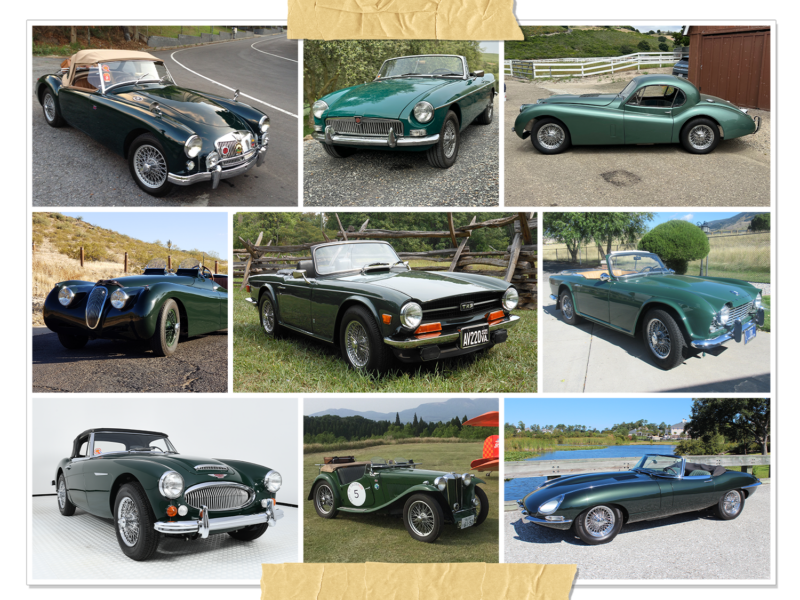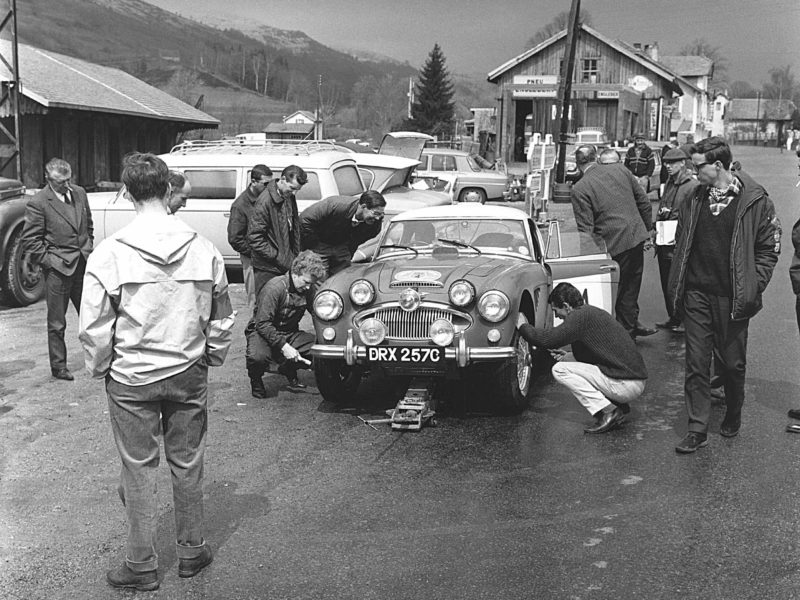By Paul Richardson
The first Triumph TR2 was born in January 1953, designed and engineered to thrive in the flourishing American sports car market. The production run totaled 8,636 cars between summer 1953 and fall 1955. Many of these TR2s were shipped to the U.S., where they promptly made Triumph an exciting presence on the American carscape.
TR2s were the automotive embodiment of the British bulldog: short, squatty, and spirited. This enviable combination of performance and looks—combined with a reasonable price—established the lineage as a favorite among American motoring enthusiasts.
Circuit Success
As the record books prove, the TR2 and its TR3 progeny wasted no time in earning almost every international motorsports class honor throughout the ’50s. My father, Ken Richardson, played an important role in the development and competition history of those amazing little sports cars. As he regularly emphasized, the early TR’s success was a true team effort: “I advised on design aspects and was responsible for the development of the car, but there was a host of engineers involved who did outstanding work. Without them, the project would not have been possible.”

Ken Richardson established a world speed record for two-liter production sports cars of 124.095 mph. To reduce drag, the seat was removed and Ken hunched down on a cushion.
The TR2’s first international event occurred only four months after the original prototype was built. A plan was hatched after Sir John Black, head of The Standard Motor Company, read that a Sunbeam Alpine had achieved 120 mph on the Jabbeke straight in Belgium. Recognizing a potential publicity opportunity, Black immediately instigated a top-speed campaign for the soon-to-be-produced TR2.
On May 20, 1953, TR2 prototype “MVC 575” set a new world record for production two-liter sports cars of 124.095 mph at Jabbeke. The first works events in 1954 were the Mille Miglia, Alpine Rally, and the Tourist Trophy race at Dundrod in Northern Ireland.
The TR2’s reliability and competitive edge were apparent in those events. A TR2 finished 27th overall in the Mille Miglia (in an original entry list of more than 470 cars including no less than 22 Ferraris). In their first Alpine rally, three TR2s won the team prize and just about every other class award open to them. In the Tourist Trophy race at Dundrod, six TR2s started (one works car and works support for the five others). All six finished, and the two teams of three won the first and second team prizes.
Probably the most impressive outing for the early TRs was in the 1956 Alpine Rally. As Autocar described the event later that year, “Six cars were entered. They took five ‘Coupes des Alps,’ finished in the first five places in their class, and won the manufacturer’s team prize. The cars had swept the board of almost every prize open to them.” Unfortunately, the Richardson/Heathcote car had to retire when a rear wheel came off, or the TR team might have tallied six Coupes des Alps.
Throughout the ’50s, TR class wins, team prizes, and ladies’ awards were collected in all the major rallies, including the Monte Carlo, RAC, Tulip, Lyons Charbonniers, Circuit of Ireland, Acropolis, the German Rally, Liege-Rome-Liege, Tour de France, and the Alpine. Part and parcel of the TR success story was their legendary reliability. Toward the end of their competitive career, in July 1959, TR3A “XHP 259” gained eight Class E world endurance records on the Monza banked circuit in Italy—averaging over 100 mph for 96 hours.
Team TR2
The Triumph Rally and Le Mans team had its share of characters and comedians. Most notable were probably Les Brooke and Ninian Sanderson. They both drove TRs in the first works entry at Le Mans in 1955. (Three TR2s were entered in this race and finished a very credible 14th, 15th, and 19th overall.)

Triumph’s first works endeavor was the ’54 Mille Miglia in this TR2. Ken Richardson finished 27th overall.
In a Le Mans anecdote related years later by Les Brooke’s co-driver, Mort Goodall, Brooke went off the circuit during the race and planted his TR on top of a sandbank. He removed the transmission tunnel cover, intending to use it as a shovel to dig the car out—only to have a trackside official point to a shovel about 50 yards away. When Les freed the TR from the sandbank, after about an hour and a half of digging, he drove back to the pits with his shirt removed and his suspenders hanging around his waist. Parched with thirst, he jumped onto the pit counter, picked up a less-than-sanitary-looking watering can, put the spout in his mouth, and drank—as his trousers gently fell to the ground.
Ninian Sanderson was the group’s king of practical jokers and had a natural wit. That same year at Le Mans, my father, Ken, was driving with Bert Hadley and Ninian with Bobby Dixon. Ken related that just after a pit stop, and in pouring rain, he pulled out a few hundred yards in front of Ninian. On the long Mulsanne straight, Ninian began flashing his lights furiously. Ken eased up a little, thinking something was wrong. Ninian pulled alongside Ken and shouted, “Got any cigarettes on you?” (Ninian won Le Mans the following year in an Ecurie Ecosse D-Type Jaguar.)
Teams often have one member who has a proclivity for eccentricity. In the TR’s case, mechanic George Hylands took that honor. Concluding that his fellow mechanics looked a bit seedy, George took charge of team fitness. He ordered everyone out to the parking lot at lunchtime and proceeded with regimens of running in place, push-ups, and knee bends until he thought everyone was fit.
Over the years, everyone who was involved with TR competition in the ’50s agrees that they were happy times. These folks are fun, and the friendships I enjoy because of the Triumph TR are part and parcel of the TR heritage.
















'TR2 Golden Anniversary' has no comments
Be the first to comment this post!